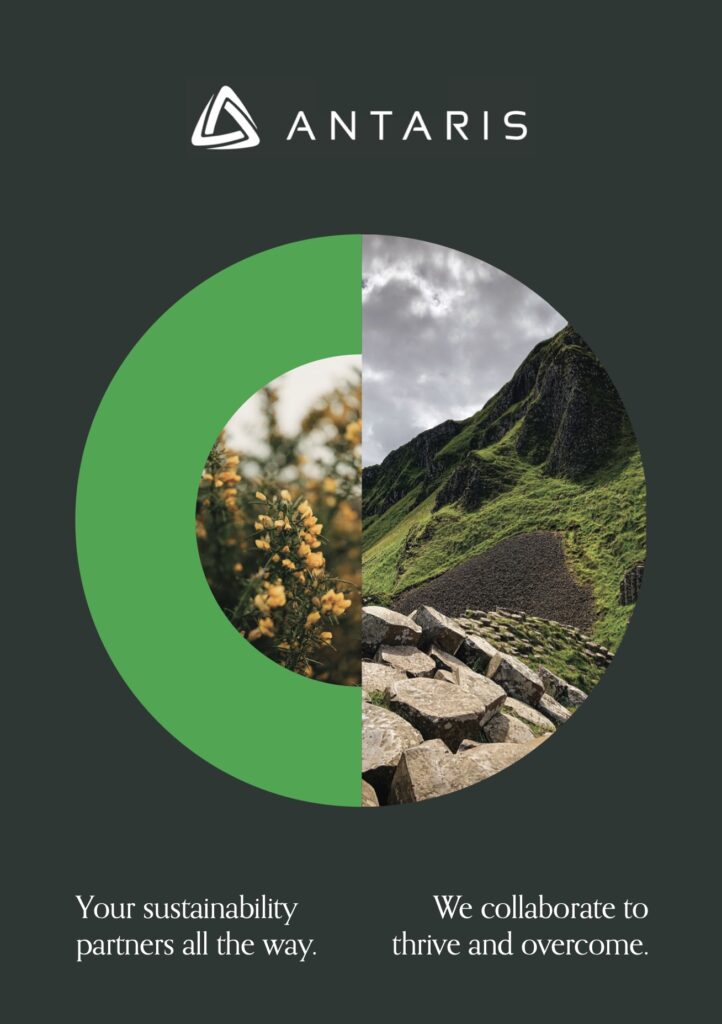Leading organisations to a higher standard of sustainability
Antaris is a leading management and training, ISO and sustainability consultancy in Ireland that collaborates on an individual level with clients, providing effective solutions and support that empower them to achieve their sustainability goals.
Trusted by:

Certification
Success Rate
Companies
Helped
Industries

We act on the imperative of sustainability, one work day at a time.

We act on the imperative of sustainability, one work day at a time.
Our Services
We specialise in everything from ISO implementation and training to Occupational Health & Safety and Environmental Management, providing a comprehensive range of sustainability services including sustainable strategies, materiality assessments, and Sustainability Training and Development.

ISO Management Systems

Environment

Energy
Sustainability and Climate
Occupational Health & Safety (+ATEX)
Quality
Training and Development
Insights
- All
- Blog
- Case studies
- News
New ISO Policy Change: significant addition of Climate Change to all management system standards
New ISO Policy Change: significant addition of Climate Change to all management system standards On 22 February …
Safe Workplace in 2024: Top 10 Essential Tips
Top 10 tips on how to maintain a safe workplace in 2024 Creating a safe workplace is …
Antaris Achieves Exclusive 5% Gold Ranking with EcoVadis: A Milestone for Corporate Responsibility
Gold Ranking by EcoVadis In a landmark achievement, Antaris has been awarded the coveted Gold ranking by …
Leading the Way in ESG & Climate Change: We are Your Management Systems Experts
Founded in 1994, Antaris is an independent, Irish-owned sustainability business consultancy born out of the belief that long-term partnerships, shared commitment, and fearless curiosity are the path to sustainability success.

What our clients
have to say
“GNI have used the services of Antaris for more than 10 years and have always found them supportive, informative and professional. They have supported us in the development of our integrated management system, auditor training requirements, and supported us in developing an effective document management system”
Tadhg Kelly

“The professional service and value Antaris have brought to our organisation has been incredible. Their practical guidance, customer focused approach and professional attitude enabled us to achieve our objectives and ensuring we maintain excellent service to our clients.”
Chris Deans

“In Boston Scientific, we value our people, planet, and property; which fall under EHS compliance. Antaris have been a partner with Boston Scientific for several years, and have enabled us as a company to achieve high standards in our compliance programmes.
Antaris is instrumental in assisting Boston Scientific Clonmel in achieving and maintaining our accreditation’s ISO 14001, ISO 50001, and more recently, ISO 45001.
Antaris provide consultancy and training which is tailored to meet our needs. Antaris consultants understand our business needs. We at Boston Scientific value the partnership we have had with Antaris over the past several years.”
Kieran Thompson
“We found that the report, in particular, was very thorough and offers us much food for thought and will guide our decisions on energy generation and consumption over the coming 5 years. The process was very straightforward and Liam Regan offered an excellent service, very approachable and thorough in his approach.”
Kieran Hodnett
“Antaris Consulting were tasked with providing professional services to Corinne Evans Physiotherapy as part of the Green for Micro Programme. This programme aims to help prepare small businesses for the low carbon, more resource efficient economy of the future. The report shared with us was a very comprehensive document and we are delighted to include the findings for Corinne Evan Physiotherapy Clinic.”
Corrine Evans
“Thermo King, Galway have had an association with Antaris for several years. in which we have received ongoing support in relation to relevant EH&S legislation. We have found this support to be of great value in complying with the relevant EH&S legislation and also satisfying the requirements of our external auditors for ISO 14001 certification.”
Michelle Nolan

Gerard Higgins

Eugene Cush

Nick Smyth

Finbarr Stapleton

Imelda Condron

Liam Regan
Your Partners
The Antaris team is made up of expert consultants who provide collaborative support, working with you and walking with you through each step on the way toward your sustainability and management system goals.
We specialise in everything from Health & Safety, Environment, Sustainability and Climate to Quality, Energy Management, Food Safety, Information Security and Data Privacy
Begin Your Journey



